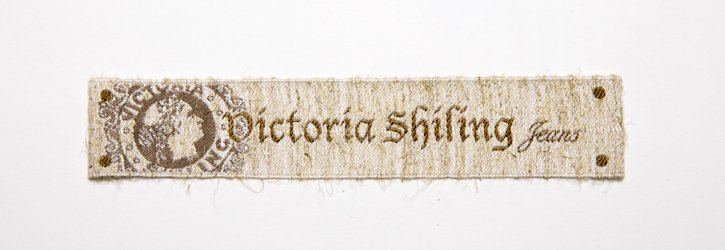Green, sustainable, and environment-friendly labels quickly become an order of the day in the globe today. No wonder this trend extended its tentacles to the fashion sector. Numerous clothing firms now realize the potential in fabrics, which have never been deemed usable, with many new inventions. There are several sustainable resources such as hemp paper, organic cotton, by-products for fruits, etc. Here are several sustainable materials suited for your label and tags of clothing:
Recycled polyester yarn:
You may get woven labels that are one of the most environmentally friendly materials available using 100% recycled polyester yarn. For example, bionic yarn is a fabric from the plastic ocean. This yarn consists of three layers that give it the long life, elasticity and texture necessary for the labels and the clothes tags.
Jute:
Jute is a green string too. Jute develops without outside support with just natural rainfall (pesticides or fertilizers). It takes around five months for a plant to reach maturity. As a result, it is a long-term crop with a high turnover. Griffes Vivienne offers 100% recycled woven and printed labels.
Organic cotton:
To be able to establish an organic cotton farm, the land must be treated to remove toxins. Furthermore, the ground might lay fallow to release the toxins. There is no chemical alteration of these cotton plants, and there is no usage of fertilizers and chemicals. This procedure tries to decrease pollution or pollutants since the growing process eliminates chemicals and toxins. It reduces the carbon footprint and generates a skin-friendly and environment-friendly material and perfect for tags and labels.
Fruit by-products:
Many can utilize fruit by-products for the production of sustainable materials. For example, Piñatex is a popular waste material derived from dead pineapple leaves. Piñatex’s texture is practically the same as leather, making it a viable alternative to plastic vegan leathers. As a durable material for tags of clothes, the most remarkable thing about Piñatex is that it is an agricultural by-product and that as such, no space for plants has to be reserved. Another green substance derived from the fruit is the by-product of citrus juice. The tags are delicate and suitable for any clothing.
Bamboo:
Bamboo is also a plant that does not need pesticides for ecologically beneficial use. When contrast to cotton items, they can live on a small amount of water. Bamboo also has characteristics that make it resistant to microorganisms. As a consequence, bamboo clothing tags or labels are ideal for individuals with sensitive skin or allergies. Bamboo has inherent deodorizing capabilities due to its antibacterial qualities.
Hemp:
Hemp may thrive in areas where water is scarce. It is resistant to insecticides and can withstand any farm environment. Hemp is not only ecologically beneficial, but it also gives superior value to customers and is long-lasting. The qualities of hemp make it ideal for garment tags and labels. It becomes softer with time, making it more pleasant to wear. It’s the perfect material for creating bespoke woven labels and tags.
Lyocell:
Fabric is made from eucalyptus trees and uses a closed-loop manufacturing technique. This means that virtually all of the chemical solutions used in the manufacturing process may be collected and reused. As a result, the ecosystem is safe from these pollutants. In the area of environmentally friendly materials, Lyocell is a cutting-edge substance. It’s a 100% biodegradable substance. As a result, it has a low carbon and environmental impact on all textiles used for clothing tags. It goes well with denim, bedding, athletic wear, and other apparel fabrics.
Textile recovery system:
It’s worth noting that this is more of a system or a process than a substance. The procedure relies upon repurposing discarded cotton textile scraps from all around the world. It transforms current cotton into long-lasting fabric ideal for labels and tags without chemicals or water. The method produces brilliant colours without the use of dyes. As a result, the procedure is sustainable, and the output is environmentally beneficial due to the removal of hazardous dyes and their by-products.
The fundamental goal of an environmentally friendly material is to decrease carbon emissions and other toxins. These toxins come into the atmosphere through the textile preparation process. Several sustainable and environmentally friendly materials have been selected and presented. When used as fabric labels and tags, these are environmentally safe and pleasant fabrics with the perfect texture and feel.


